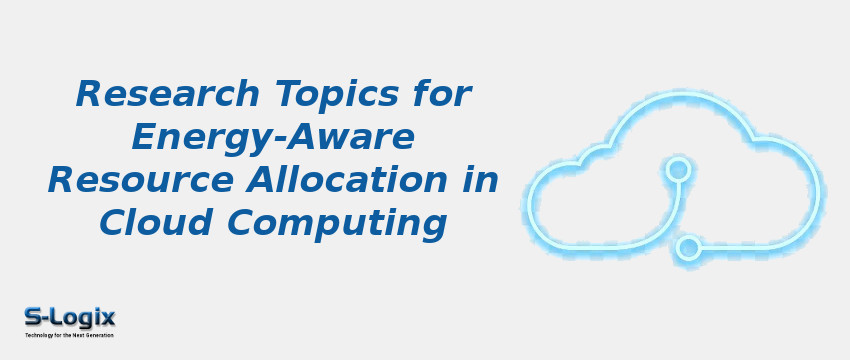Energy-aware resource allocation in cloud computing implies assigning and managing computing resources in a cloud environment to maximize energy efficiency while ensuring the performance and reliability of cloud services.
Selecting energy-efficient hardware and utilizing power-saving techniques such as dynamic voltage and frequency scaling to reduce energy consumption. It also involves optimizing resource allocation, load balancing, and virtual machine placement to minimize energy waste.
The goal is to reduce the overall energy consumption of the cloud infrastructure and reduce costs while maintaining a high level of service for users.
• Power Management: Utilizing power management techniques such as dynamic voltage and frequency scaling, idle state management, and hibernation mode to reduce energy consumption.
• Resource Consolidation: Consolidating multiple virtual machines onto fewer physical servers to reduce energy waste and improve utilization.
• Load Balancing: Dynamically balancing the load across different servers ensures that all servers are utilized efficiently, and no server is under-utilized or over-utilized.
• Virtual Machine Placement: Allocating virtual machines to physical servers based on energy consumption and resource requirements to minimize energy waste.
• Resource Allocation: Allocating resources, such as CPU, memory, and storage, to virtual machines in an energy-efficient manner to reduce energy consumption and improve performance.
There are several challenges in implementing energy-aware resource allocation in cloud computing, including:
• Trade-off between performance and energy consumption: Optimizing resource allocation for energy efficiency often leads to a trade-off between performance and energy consumption. Balancing these factors is challenging and requires careful consideration of various factors, such as workload characteristics and resource requirements.
• Complexity of cloud infrastructure: The dynamic nature and complexity make monitoring and controlling energy consumption difficult.
• Heterogeneity of resources: Energy consumption varies greatly between different types of hardware and virtual machines, making it difficult to determine the optimal resource allocation strategy.
• Limited visibility: Cloud providers often have limited visibility into the energy consumption of individual components in their infrastructure, making it difficult to optimize resource allocation and improve energy efficiency.
• Virtualization: Exploring the potential of virtualization technologies to allocate and manage energy-efficient resources in cloud data centers dynamically.
• Resource-constrained environments: Developing energy-aware resource allocation strategies for resource-constrained cloud environments, such as edge computing and Internet of Things (IoT) networks.
• Energy-efficient algorithms: Researching and developing energy-efficient algorithms for resource allocation, scheduling, and load balancing in cloud data centers.
• Green computing: Developing methods for reducing the carbon footprint of data centers through energy-efficient resource allocation strategies.
• Cloud bursting: Investigating energy-aware resource allocation strategies for cloud bursting, a technique that dynamically allocates resources between the cloud and local computing environments.
• Energy-aware task scheduling: Developing energy-aware task scheduling algorithms to minimize energy consumption while ensuring tasks are completed within their deadlines.
• Resource provisioning: Investigating energy-efficient resource provisioning methods for cloud data centers, including server consolidation and virtual machine migration.
• Energy-aware application deployment: Developing energy-aware application deployment strategies that consider the energy requirements and energy-saving potential of different applications.
